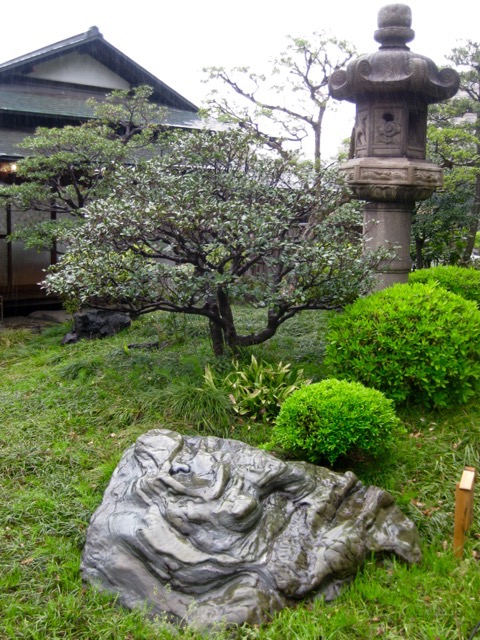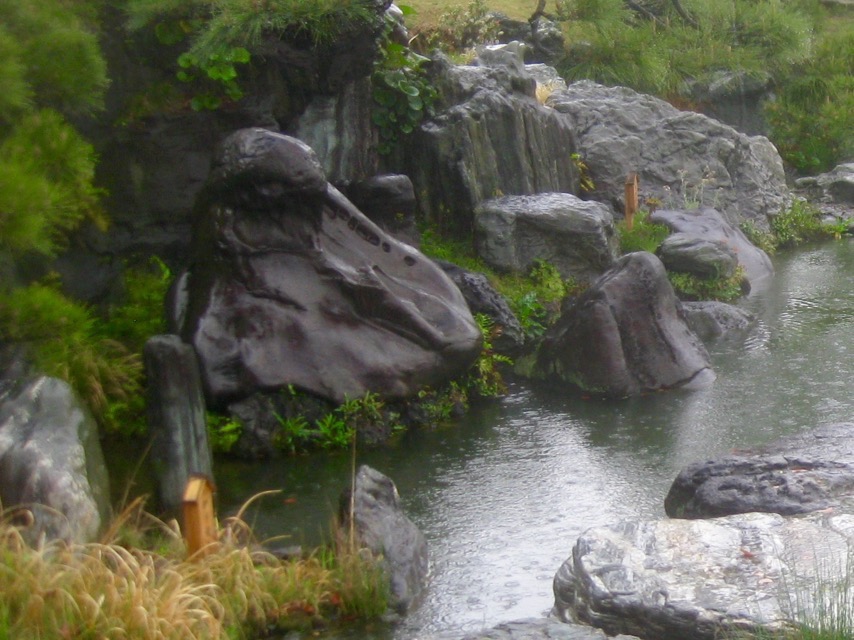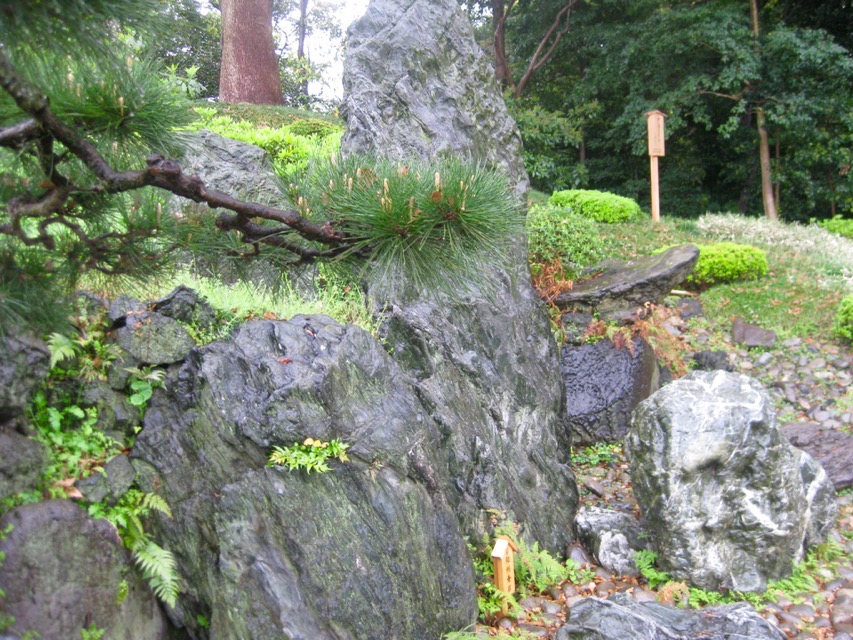
Important and valuable stones have been collected from all over Japan and brought to Kiyosumi for display. The Japanese art of stone appreciation is called “Suiseki”.
Suiseki (Sui = water, Seki = stone) is the study and enjoyment of naturally formed stones as objects of beauty. The art of Suiseki involves the collection, preparation and appreciation of unaltered naturally formed stones. These stones are found in mountain streams, on windblown deserts, along ocean beaches - anywhere that nature may have deposited or shaped them.
Suiseki are stones that suggest mountains, lakes, waterfalls and other natural scenes or that are aesthetically pleasing in shape and texture. They represent nature in the palm of your hand.
Suiseki are small, naturally formed stones admired for their beauty and for their power to suggest a scene from nature or an object closely associated with nature. Among the most popular types of suiseki (pronounced suu-ee-seck-ee) are those that suggest a distant mountain, a waterfall, an island, a thatched hut, or an animal.
Explained in a simple way, the suiseki is the comprehension and the appreciation of nature through a stone, resulting from nature.
A suiseki has the capacity to represent with the eyes of the man, on a few centimeters, the whole earth and cosmos.
The brochure for Kiyosumi lists a number of Meiseki (= exceptional stone, a masterpiece). The stones are labelled in the garden with wooden signs. In addition many other stones are used as paving stones, stepping stones over the pond and bridges.

The group of stones below is a Karetaki formation - the stones are meant to represent a dry waterfall and have markings that suggest that there was a waterfall previously.

Karetaki - dry waterfall formation